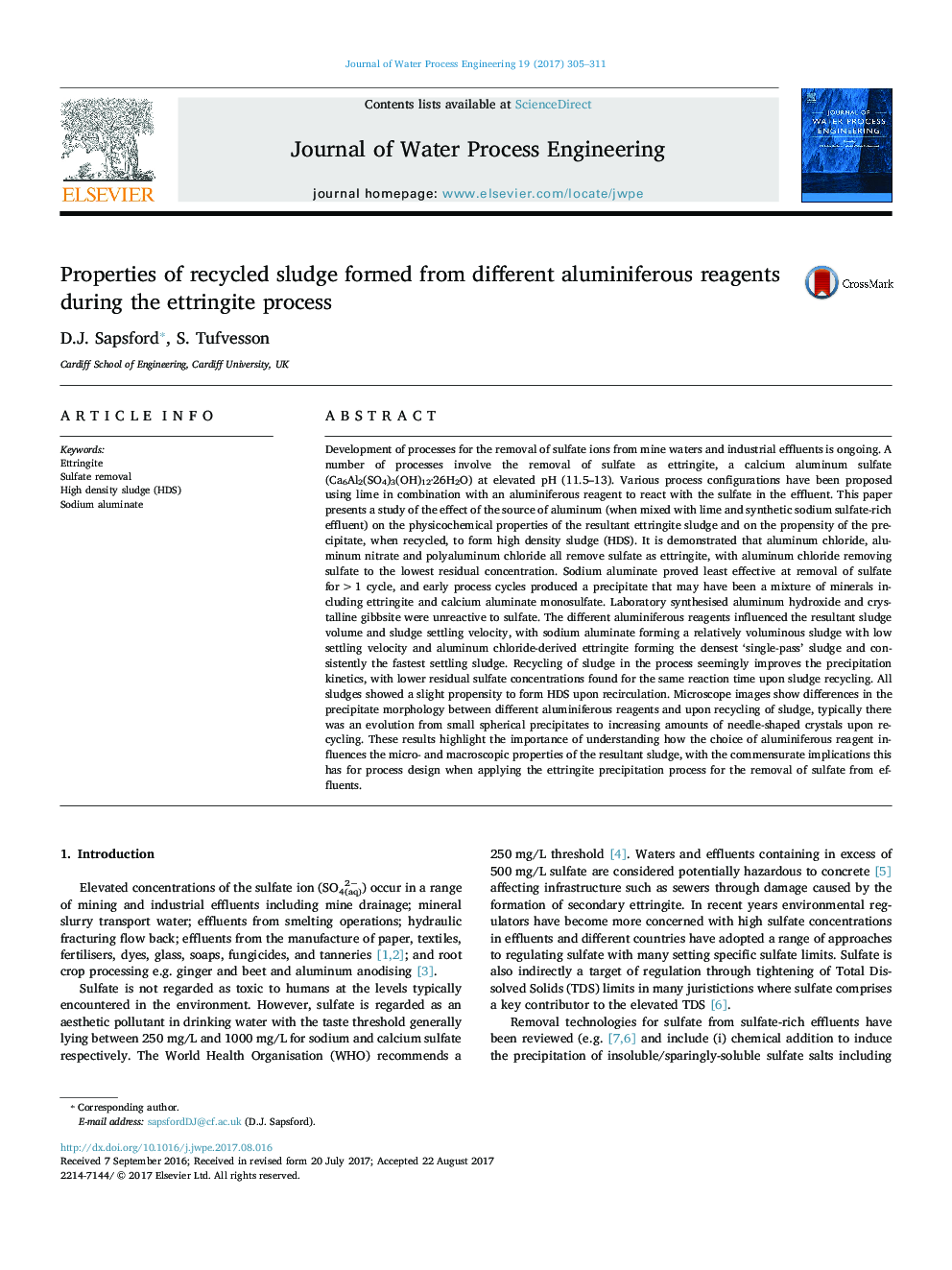| Article ID | Journal | Published Year | Pages | File Type |
|---|---|---|---|---|
| 4909999 | Journal of Water Process Engineering | 2017 | 7 Pages |
Abstract
Development of processes for the removal of sulfate ions from mine waters and industrial effluents is ongoing. A number of processes involve the removal of sulfate as ettringite, a calcium aluminum sulfate (Ca6Al2(SO4)3(OH)12·26H2O) at elevated pH (11.5-13). Various process configurations have been proposed using lime in combination with an aluminiferous reagent to react with the sulfate in the effluent. This paper presents a study of the effect of the source of aluminum (when mixed with lime and synthetic sodium sulfate-rich effluent) on the physicochemical properties of the resultant ettringite sludge and on the propensity of the precipitate, when recycled, to form high density sludge (HDS). It is demonstrated that aluminum chloride, aluminum nitrate and polyaluminum chloride all remove sulfate as ettringite, with aluminum chloride removing sulfate to the lowest residual concentration. Sodium aluminate proved least effective at removal of sulfate for >1 cycle, and early process cycles produced a precipitate that may have been a mixture of minerals including ettringite and calcium aluminate monosulfate. Laboratory synthesised aluminum hydroxide and crystalline gibbsite were unreactive to sulfate. The different aluminiferous reagents influenced the resultant sludge volume and sludge settling velocity, with sodium aluminate forming a relatively voluminous sludge with low settling velocity and aluminum chloride-derived ettringite forming the densest 'single-pass' sludge and consistently the fastest settling sludge. Recycling of sludge in the process seemingly improves the precipitation kinetics, with lower residual sulfate concentrations found for the same reaction time upon sludge recycling. All sludges showed a slight propensity to form HDS upon recirculation. Microscope images show differences in the precipitate morphology between different aluminiferous reagents and upon recycling of sludge, typically there was an evolution from small spherical precipitates to increasing amounts of needle-shaped crystals upon recycling. These results highlight the importance of understanding how the choice of aluminiferous reagent influences the micro- and macroscopic properties of the resultant sludge, with the commensurate implications this has for process design when applying the ettringite precipitation process for the removal of sulfate from effluents.
Related Topics
Physical Sciences and Engineering
Chemical Engineering
Chemical Engineering (General)
Authors
D.J. Sapsford, S. Tufvesson,
